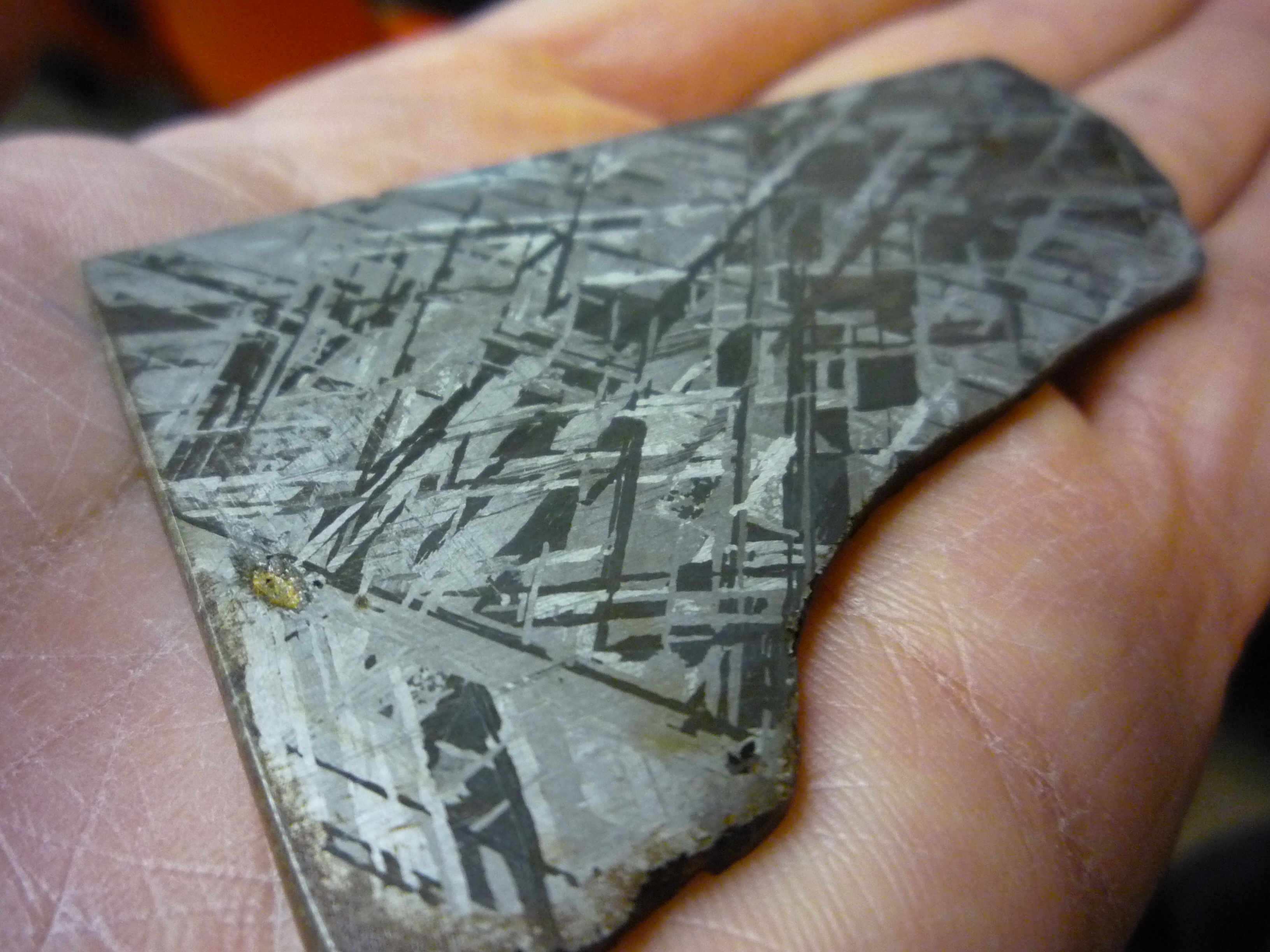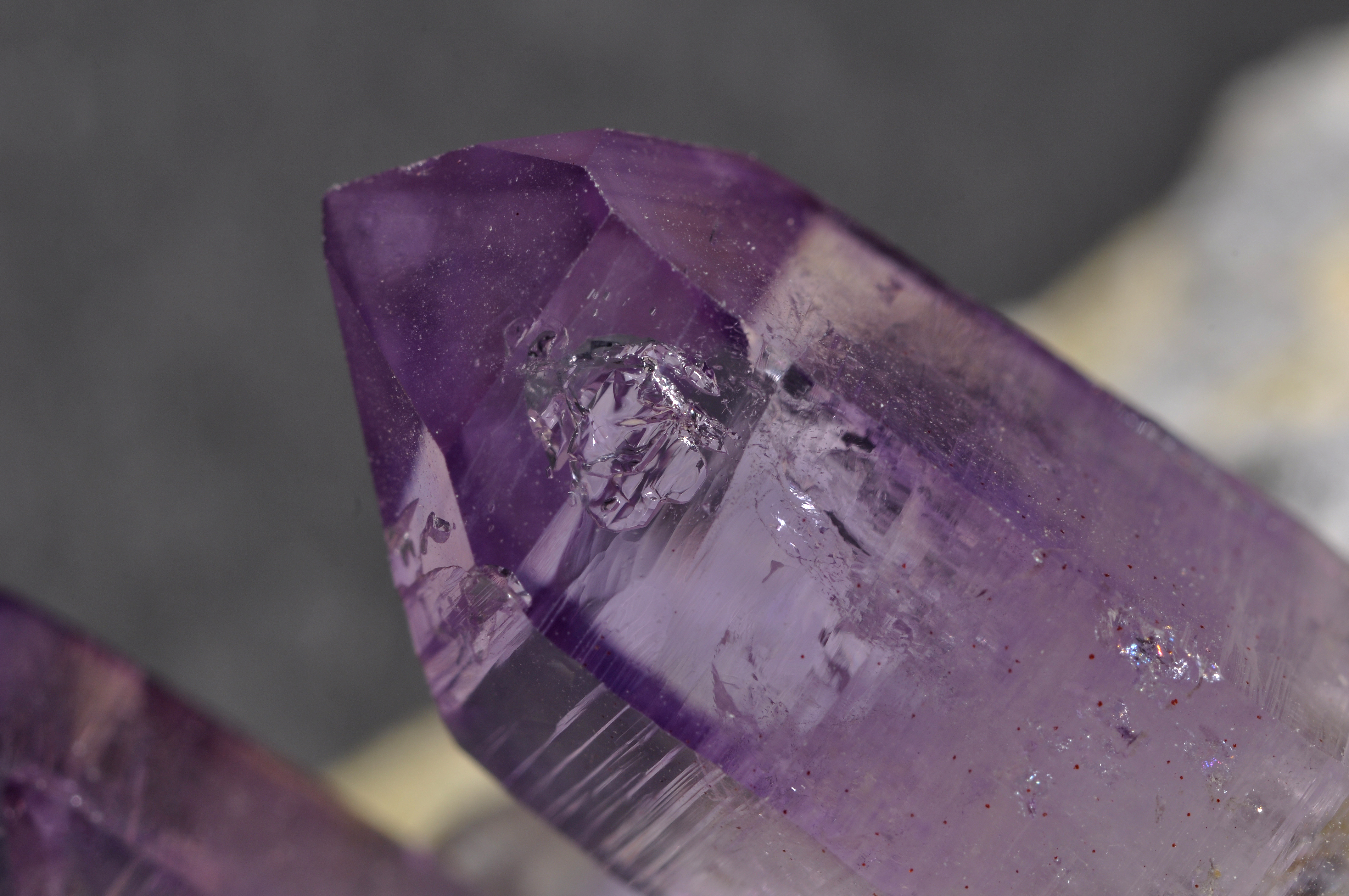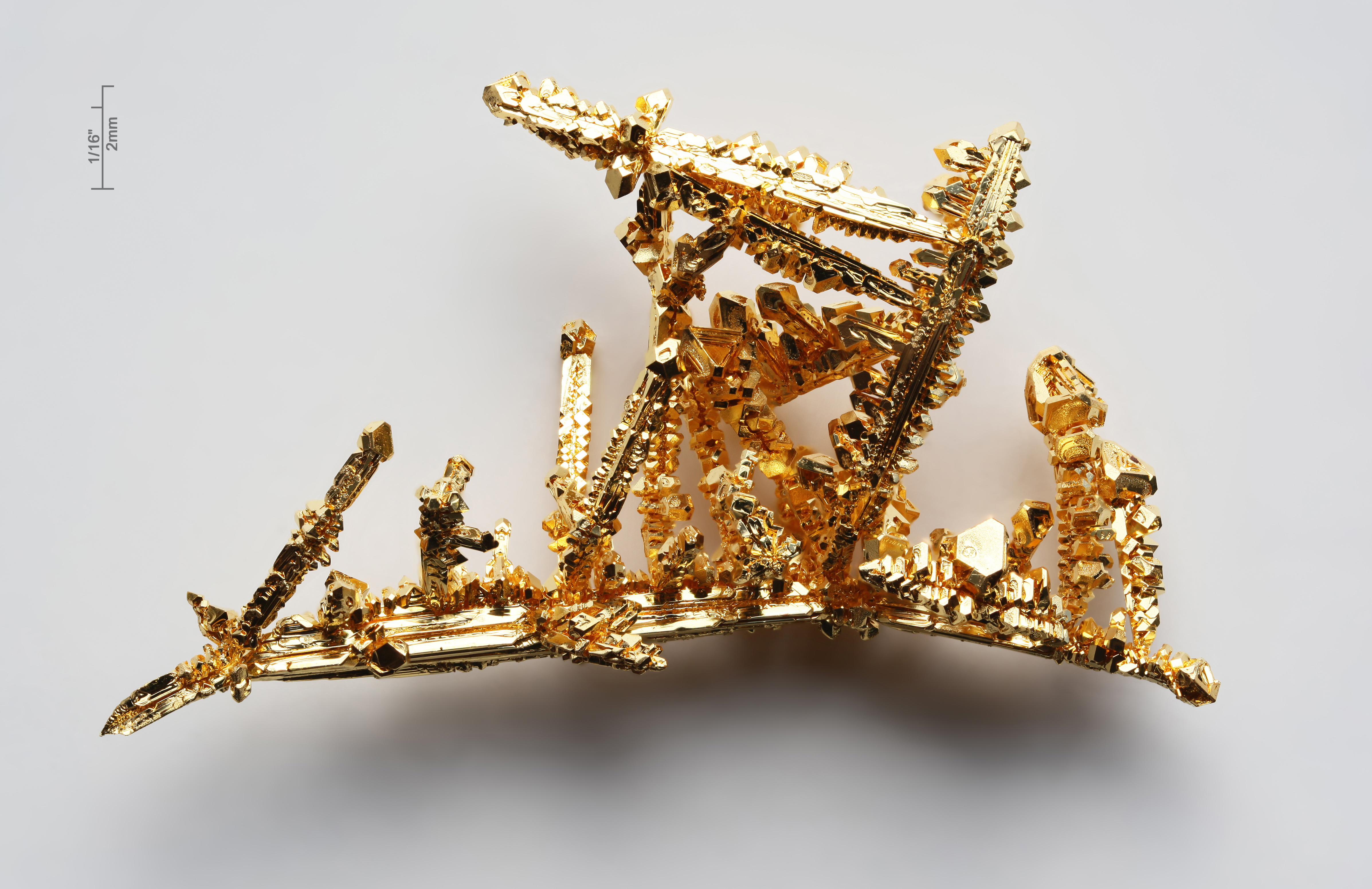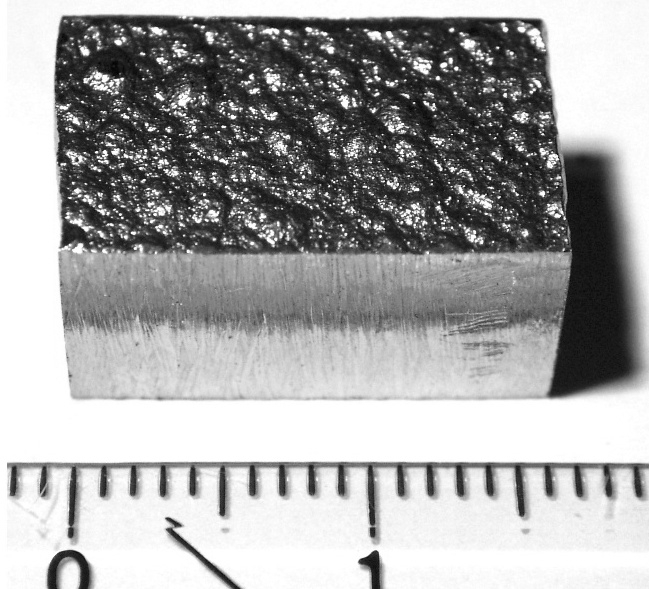 |
Mond Process
The Mond process, sometimes known as the carbonyl process, is a technique created by Ludwig Mond in 1890, to extract and purify nickel. The process was used commercially before the end of the 19th century, and particularly by the International Nickel Company in the Sudbury Basin. This process converts nickel oxides into nickel metal with very high purity being attainable in just a single step. Synopsis This process involves the fact that carbon monoxide combines with nickel readily and reversibly to give nickel carbonyl. No other element forms a carbonyl compound under the mild conditions used in the process. This process has three steps: 1. Nickel oxide reacts with syngas at 200 °C to give nickel, together with impurities including iron and cobalt. :NiO(s) + H2(g) → Ni(s) + H2O(g) 2. The impure nickel reacts with carbon monoxide at 50–60 °C to form the gas nickel carbonyl, leaving the impurities as solids. :Ni(s) + 4 CO(g) → Ni(CO)4(g) 3. ... [...More Info...] [...Related Items...] OR: [Wikipedia] [Google] [Baidu] [Amazon] |
 |
Nickel Kugeln
Nickel is a chemical element; it has Chemical symbol, symbol Ni and atomic number 28. It is a silvery-white lustrous metal with a slight golden tinge. Nickel is a hard and Ductility, ductile transition metal. Pure nickel is chemically reactive, but large pieces are slow to react with air under Standard temperature and pressure, standard conditions because a Passivation (chemistry), passivation layer of Nickel(II) oxide, nickel oxide forms on the surface that prevents further corrosion. Even so, pure native metal, native nickel is found in Earth's crust only in tiny amounts, usually in ultramafic rocks, and in the interiors of larger iron meteorite, nickel–iron meteorites that were not exposed to oxygen when outside Earth's atmosphere. Meteoric iron, Meteoric nickel is found in combination with iron, a reflection of the origin of those elements as major end products of supernova nucleosynthesis. An iron–nickel mixture is thought to compose Earth's outer core, Earth's outer a ... [...More Info...] [...Related Items...] OR: [Wikipedia] [Google] [Baidu] [Amazon] |
|
Syngas
Syngas, or synthesis gas, is a mixture of hydrogen and carbon monoxide in various ratios. The gas often contains some carbon dioxide and methane. It is principally used for producing ammonia or methanol. Syngas is combustible and can be used as a fuel. Historically, it has been used as a replacement for gasoline when gasoline supply has been limited; for example, wood gas was used to power cars in Europe during WWII (in Germany alone, half a million cars were built or rebuilt to run on wood gas). Production Syngas is produced by steam reforming or partial oxidation of natural gas or liquid hydrocarbons, or coal gasification. : : : Steam reforming of methane is an endothermic reaction requiring 206 kJ/mol of energy: : In principle, but rarely in practice, biomass and related hydrocarbon feedstocks could be used to generate biogas and biochar in waste-to-energy gasification facilities. The gas generated (mostly methane and carbon dioxide) is sometimes described as ''syng ... [...More Info...] [...Related Items...] OR: [Wikipedia] [Google] [Baidu] [Amazon] |
|
 |
Crystal Bar Process
A crystal or crystalline solid is a solid material whose constituents (such as atoms, molecules, or ions) are arranged in a highly ordered microscopic structure, forming a crystal lattice that extends in all directions. In addition, macroscopic single crystals are usually identifiable by their geometrical shape, consisting of flat faces with specific, characteristic orientations. The scientific study of crystals and crystal formation is known as crystallography. The process of crystal formation via mechanisms of crystal growth is called crystallization or solidification. The word ''crystal'' derives from the Ancient Greek word (), meaning both "ice" and " rock crystal", from (), "icy cold, frost". Examples of large crystals include snowflakes, diamonds, and table salt. Most inorganic solids are not crystals but polycrystals, i.e. many microscopic crystals fused together into a single solid. Polycrystals include most metals, rocks, ceramics, and ice. A third categor ... [...More Info...] [...Related Items...] OR: [Wikipedia] [Google] [Baidu] [Amazon] |
|
Carbonyl Metallurgy
Carbonyl metallurgy is used to manufacture products of iron, nickel, steel, and other metals. Coatings are produced by vapor plating using metal carbonyl vapors. These are metal-ligand complexes where carbon monoxide is bonded to individual atoms of metals . Iron carbonyl is stable as iron pentacarbonyl, where five carbon monoxide molecules are pendently bonded to the iron atom, while nickel carbonyl is stable as nickel tetracarbonyl, which has four carbon monoxide molecules pendantly bonded to the nickel atom. Both can be formed by the exposure of the powdered metal to carbon monoxide gas at temperatures of around 75 degrees Celsius. Both the metal carbonyls decompose near 175 °C, resulting in a vapor plated metallic coating. The thickness of the vapor plated deposit can be increased to desired thicknesses by controlling the amount of metal carbonyl used and the duration of the plating process. Vale Inco produces over 100 million pounds (''ca''. 45000 tonnes The ton ... [...More Info...] [...Related Items...] OR: [Wikipedia] [Google] [Baidu] [Amazon] |
|
 |
Electroless Nickel Plating
Electroless Deposition, Electroless nickel-phosphorus plating, also referred to as ''E-nickel'', is a chemical engineering, chemical process that deposits an even layer of nickel-phosphorus alloy on the surface of a solid substrate, like metal or plastic. The process involves dipping the substrate in a water solution containing nickel salt (chemistry), salt and a phosphorus-containing reducing agent, usually a hypophosphite salt. It is the most common version of electroless nickel plating (EN plating) and is often referred by that name. A Electroless nickel-boron plating, similar process uses a borohydride reducing agent, yielding a nickel-boron coating instead. Unlike electroplating, processes in general do not require passing an electric current through the bath and the substrate; the redox reaction, reduction of the metal cations in solution to metallic is achieved by purely chemical means, through an autocatalysis, autocatalytic reaction. This creates an even layer of met ... [...More Info...] [...Related Items...] OR: [Wikipedia] [Google] [Baidu] [Amazon] |
 |
Chemical Transport Reaction
In chemistry, a chemical transport reaction describes a process for purification and crystallization of non- volatile solids. The process is also responsible for certain aspects of mineral growth from the effluent of volcanoes. The technique is distinct from chemical vapor deposition, which usually entails decomposition of molecular precursors and which gives conformal coatings. The technique, which was popularized by Harald Schäfer, entails the reversible conversion of nonvolatile elements and chemical compounds into volatile derivatives. The volatile derivative migrates throughout a sealed reactor, typically a sealed and evacuated glass tube heated in a tube furnace. Because the tube is under a temperature gradient, the volatile derivative reverts to the parent solid and the transport agent is released at the end opposite to which it originated (see next section). The transport agent is thus catalytic. The technique requires that the two ends of the tube (which contai ... [...More Info...] [...Related Items...] OR: [Wikipedia] [Google] [Baidu] [Amazon] |
 |
Cobalt
Cobalt is a chemical element; it has Symbol (chemistry), symbol Co and atomic number 27. As with nickel, cobalt is found in the Earth's crust only in a chemically combined form, save for small deposits found in alloys of natural meteoric iron. The free element, produced by reductive smelting, is a hard, lustrous, somewhat brittle, gray metal. Cobalt-based blue pigments (cobalt blue) have been used since antiquity for jewelry and paints, and to impart a distinctive blue tint to glass. The color was long thought to be due to the metal bismuth. Miners had long used the name ''kobold ore'' (German language, German for ''goblin ore'') for some of the blue pigment-producing minerals. They were so named because they were poor in known metals and gave off poisonous arsenic-containing fumes when smelted. In 1735, such ores were found to be reducible to a new metal (the first discovered since ancient times), which was ultimately named for the ''kobold''. Today, some cobalt is produced sp ... [...More Info...] [...Related Items...] OR: [Wikipedia] [Google] [Baidu] [Amazon] |
|
Iron
Iron is a chemical element; it has symbol Fe () and atomic number 26. It is a metal that belongs to the first transition series and group 8 of the periodic table. It is, by mass, the most common element on Earth, forming much of Earth's outer and inner core. It is the fourth most abundant element in the Earth's crust, being mainly deposited by meteorites in its metallic state. Extracting usable metal from iron ores requires kilns or furnaces capable of reaching , about 500 °C (900 °F) higher than that required to smelt copper. Humans started to master that process in Eurasia during the 2nd millennium BC and the use of iron tools and weapons began to displace copper alloys – in some regions, only around 1200 BC. That event is considered the transition from the Bronze Age to the Iron Age. In the modern world, iron alloys, such as steel, stainless steel, cast iron and special steels, are by far the most common industrial metals, due to their mechan ... [...More Info...] [...Related Items...] OR: [Wikipedia] [Google] [Baidu] [Amazon] |
|
 |
Chemical Reaction
A chemical reaction is a process that leads to the chemistry, chemical transformation of one set of chemical substances to another. When chemical reactions occur, the atoms are rearranged and the reaction is accompanied by an Gibbs free energy, energy change as new products are generated. Classically, chemical reactions encompass changes that only involve the positions of electrons in the forming and breaking of chemical bonds between atoms, with no change to the Atomic nucleus, nuclei (no change to the elements present), and can often be described by a chemical equation. Nuclear chemistry is a sub-discipline of chemistry that involves the chemical reactions of unstable and radioactive Chemical element, elements where both electronic and nuclear changes can occur. The substance (or substances) initially involved in a chemical reaction are called reagent, reactants or reagents. Chemical reactions are usually characterized by a chemical change, and they yield one or more Product (c ... [...More Info...] [...Related Items...] OR: [Wikipedia] [Google] [Baidu] [Amazon] |
|
Ludwig Mond
Ludwig Mond FRS (7 March 1839 – 11 December 1909) was a German-born British chemist and industrialist. He discovered an important, previously unknown, class of compounds called metal carbonyls. Education and career Ludwig Mond was born into a Jewish family in Kassel, Germany. His parents were Meyer Bär (Moritz) Mond and Henrietta Levinsohn. After attending schools in his home town, he studied chemistry at the University of Marburg under Hermann Kolbe and at the University of Heidelberg under Robert Bunsen but he never gained a degree. He then worked in factories in Germany and the Netherlands before coming to England to work at the factory of John Hutchinson & Co in Widnes in 1862. He worked in Utrecht for the firm of P. Smits & de Wolf from 1864 to 1867 and then returned to Widnes. Here he formed a partnership with John Hutchinson and developed a method to recover sulphur from the by-products of the Leblanc process, which was used to manufacture soda ash. In 1872 Mond ... [...More Info...] [...Related Items...] OR: [Wikipedia] [Google] [Baidu] [Amazon] |
|
|
Nickel Carbonyl
Nickel carbonyl (IUPAC name: tetracarbonylnickel) is a Organonickel chemistry, nickel(0) organometallic compound with the chemical formula, formula Ni(CO)4. This colorless liquid is the principal metal carbonyl, carbonyl of nickel. It is an Reaction intermediate, intermediate in the Mond process for producing very high-purity nickel and a reagent in organometallic chemistry, although the Mond Process has fallen out of common usage due to the health hazards in working with the compound. Nickel carbonyl is one of the most dangerous substances yet encountered in nickel chemistry due to its very high toxicity, compounded with high volatility and rapid skin absorption. Structure and bonding In nickel tetracarbonyl, the oxidation state for nickel is assigned as zero, because the Ni−C bonding electrons come from the C atom and are still assigned to C in the hypothetical ionic bond which determines the oxidation states. The formula conforms to the 18-electron rule. The molecule is tetra ... [...More Info...] [...Related Items...] OR: [Wikipedia] [Google] [Baidu] [Amazon] |
|
 |
Carbon Monoxide
Carbon monoxide (chemical formula CO) is a poisonous, flammable gas that is colorless, odorless, tasteless, and slightly less dense than air. Carbon monoxide consists of one carbon atom and one oxygen atom connected by a triple bond. It is the simplest oxocarbon, carbon oxide. In coordination complexes, the carbon monoxide ligand is called ''metal carbonyl, carbonyl''. It is a key ingredient in many processes in industrial chemistry. The most common source of carbon monoxide is the partial combustion of carbon-containing compounds. Numerous environmental and biological sources generate carbon monoxide. In industry, carbon monoxide is important in the production of many compounds, including drugs, fragrances, and fuels. Indoors CO is one of the most acutely toxic contaminants affecting indoor air quality. CO may be emitted from tobacco smoke and generated from malfunctioning fuel-burning stoves (wood, kerosene, natural gas, propane) and fuel-burning heating systems (wood, oil, n ... [...More Info...] [...Related Items...] OR: [Wikipedia] [Google] [Baidu] [Amazon] |